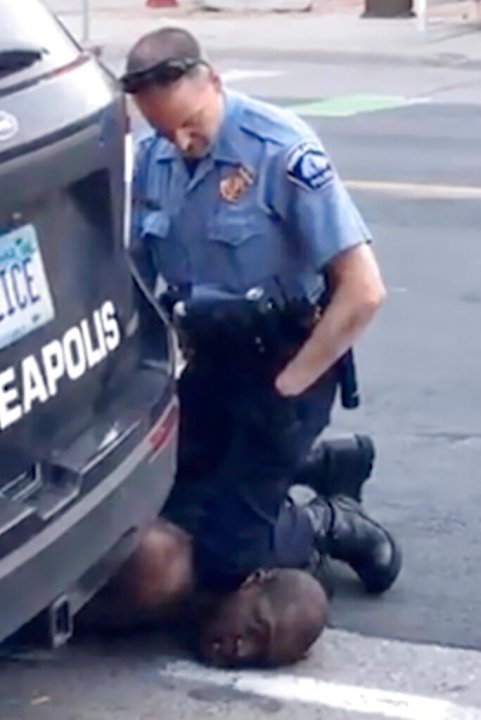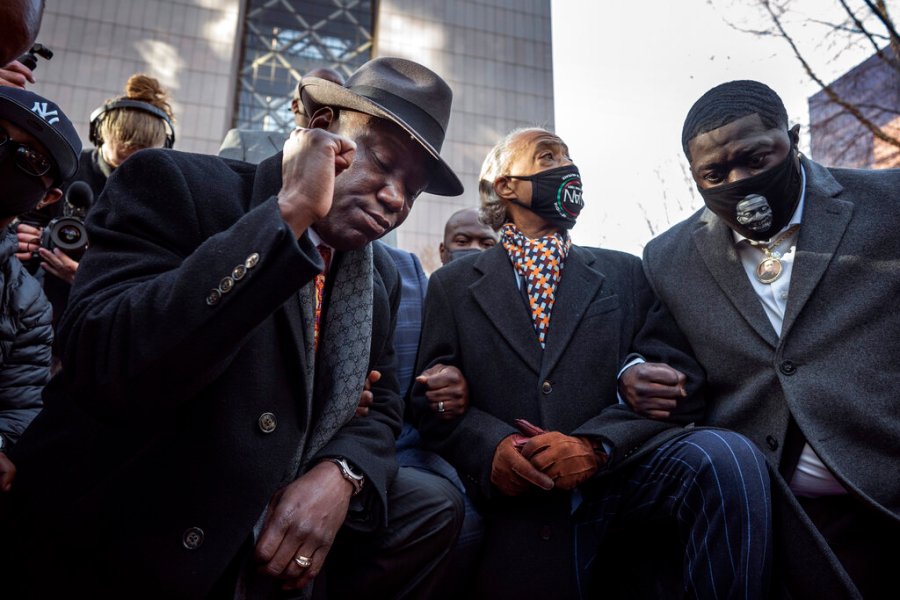MINNEAPOLIS (NewsNation Now) — Onlookers grew increasingly angry as they begged Minneapolis Officer Derek Chauvin to take his knee off George Floyd’s neck, but Chauvin would not let up, and another officer forced back members of the crowd who tried to intervene, witnesses testified Tuesday at Chauvin’s murder trial.
Witness after witness described how Chauvin was unmoved by their pleas, with the teenager who shot the harrowing video of the arrest that set off nationwide protests testifying that the officer gave the crowd a “cold” and “heartless” stare.
The defense has argued that Chauvin did what his training told him to do and that Floyd’s death was not caused by the officer but by a combination of illegal drug use, heart disease, high blood pressure and the adrenaline flowing through his body.

Chauvin continued to kneel on Floyd while fellow Officer Tou Thao held the crowd of about 15 back, even when one of the onlookers identified herself as a firefighter and pleaded repeatedly to check Floyd’s pulse, according to witnesses and bystander video.
The firefighter, Genevieve Hansen, wept on the witness stand as she recalled how she was not allowed to give any medical assistance or tell the police what to do, such as administering chest compressions.

“There was a man being killed,” said Hansen, who testified in her dress uniform and said she had emergency medical technician training. “I would have been able to provide medical attention to the best of my abilities. And this human was denied that right.”
A professional mixed martial arts fighter, Donald Williams, testified Tuesday he called 911 after paramedics took Floyd away, “because I believed I witnessed a murder.”
NewsNation will provide live coverage of the trial online and the NewsNation Now app.
Prosecutor Matthew Frank played back Williams’ 911 call, on which he is heard identifying officer Derek Chauvin by his badge number and telling the dispatcher that Chauvin had been keeping his knee on Floyd’s neck despite warnings that Floyd’s life was in danger. She offers to switch him to a sergeant.
As he is being switched, Williams can he heard yelling at the officers, “Y’all is murderers, bro!”
Williams can be heard on another bystander’s cellphone screaming at Chauvin, who kept his knee on Floyd’s neck for about nine minutes during the arrest on May 25, 2020, shortly after Floyd was accused of using a fake $20 bill.

Williams calls Chauvin a “bum” in the video, accuses the white police officer of “enjoying” his restraining of Floyd, a 46-year-old handcuffed Black man, and told jurors on Monday he believed that Chauvin was using his knee in a “blood choke” on Floyd, a wrestling move to knock an opponent unconscious.
Chauvin’s lawyers counted that Williams does not have knowledge of police maneuvers.
Darnella Frazier, the Minneapolis teenager, whose cellphone video of the arrest went viral, cried in court as she testified Tuesday.
Frazier, 18, was walking her younger cousin to buy some snacks at Cup Foods, where a worker had moments before accused Floyd of using a fake $20 bill, when she saw police arresting Floyd outside and pulled out her cellphone.
Frazier testified that she began recording the scene because “it wasn’t right, he was suffering, he was in pain.”
“I see a man on the ground and I see a cop kneeling down on him,” Frazier told the jury, explaining why she first made sure her young cousin had safely gone inside the store, out of sight. “A man terrified, scared, begging for his life.”
Frazier said of Chauvin: “He just stared at us, looked at us. He had like this cold look, heartless. He didn’t care. It seemed as if he didn’t care what we were saying.”
Frazier lost her composure when prosecutors brought up a still from her video, showing the moment when Chauvin, his knee on Floyd’s neck, appears to look directly into Frazier’s camera lens.
“Yes,” she said, crying and catching her breath, when asked if she recognized him. “This was the officer that was kneeling on George Floyd’s neck.”
“Would you describe yourselves as an unruly mob?” Jerry Blackwell, a prosecutor, asked her.
“No,” Frazier said.
Minutes later, Frazier’s young cousin, her hair in braids, took her place in the witness stand, saying in a small voice she recognized Chauvin as the man she saw kneeling on Floyd.
“I was sad and kind of mad,” the girl said.
Another bystander, 18-year-old Alyssa Funari, testified tearfully that she also felt helpless to intervene when she saw Floyd struggling to breathe as Chauvin knelt on his neck and other officers pinned down his lower body.
“I felt like there wasn’t really anything I could do as a bystander,” Funari said, adding that she felt she was failing Floyd. “Technically I could’ve did something, but I couldn’t really do anything physically … because the highest power was there at the time,” she said, explaining that an officer held the crowd back.
Prosecutors played cellphone video recorded by Funari that showed bystanders becoming more frantic and agitated as they watched Floyd stop moving. The video, which had not been released before, also showed the woman who said she was a Minneapolis firefighter calmly walk up to Thao and offer to help, before he ordered her to get back on the curb.
Frazier likewise testified that the bystanders became increasingly upset by what they were seeing and got louder and louder, “more so as he was becoming more unresponsive.”
Chauvin attorney Eric Nelson sought to use the same evidence to show that Chauvin and his fellow officers found themselves in an increasingly tense and distracting situation, with the growing crowd becoming more and more angry over Floyd’s treatment.
But witnesses also testified that no bystanders interfered with police. When Frazier was asked by a prosecutor whether she saw violence anywhere on the scene, she replied: “Yes, from the cops. From Chauvin, and from officer Thao.”
On Monday, prosecutors led off their case by playing part of the bystander video that captured Floyd’s arrest.
The white officer “didn’t let up” even after a handcuffed Floyd said 27 times that he couldn’t breathe and went limp, Prosecutor Jerry Blackwell said.
The video, which prosecutors say shows excessive force, sparked outrage and daily demonstrations in the United States and around the world protesting police brutality against Black people.
Nelson countered by arguing: “Derek Chauvin did exactly what he had been trained to do over his 19-year career.”
Floyd was fighting efforts to put him in a squad car as the crowd of onlookers around Chauvin and his fellow officers grew and became increasingly hostile, Nelson said.
Fourteen jurors or alternates are hearing the case — eight of them white, six of them Black or multiracial, according to the court. Only 12 will deliberate; the judge has not said which two will be alternates.
After Monday’s proceedings, a few hundred protesters gathered outside the courthouse. Speakers called for justice for Floyd and others whose lives were lost in encounters with police.
The downtown Minneapolis courthouse has been fortified with concrete barriers, fences and barbed and razor wire. City and state leaders are determined to prevent a repeat of the riots that followed Floyd’s death, with National Guard troops already mobilized.
Chauvin, 45, has pleaded not guilty to second-degree murder, which carries up to 40 years in prison, as well as third-degree murder and second-degree manslaughter. He and the three other officers on the scene were fired the day after Floyd’s death.
The three other former officers go on trial in August.
The Associated Press and Reuters contributed to this report. All reporting by AP’s Steve Karnowski and Amy Forliti and Reuters’ Jonathan Allen.














